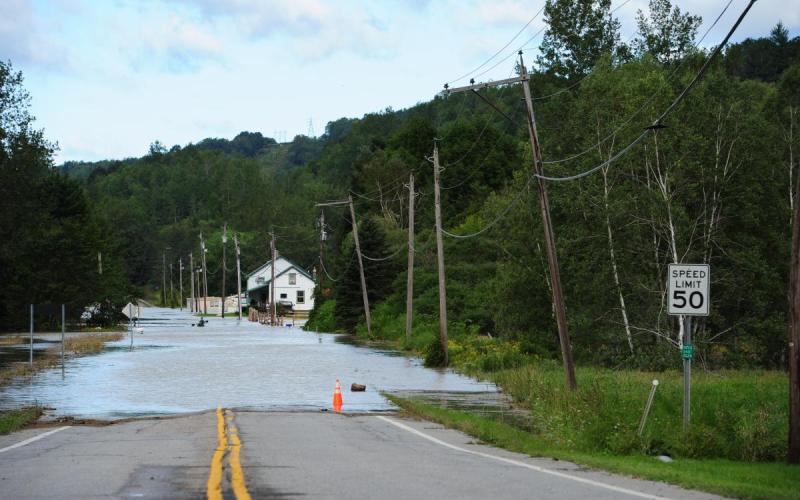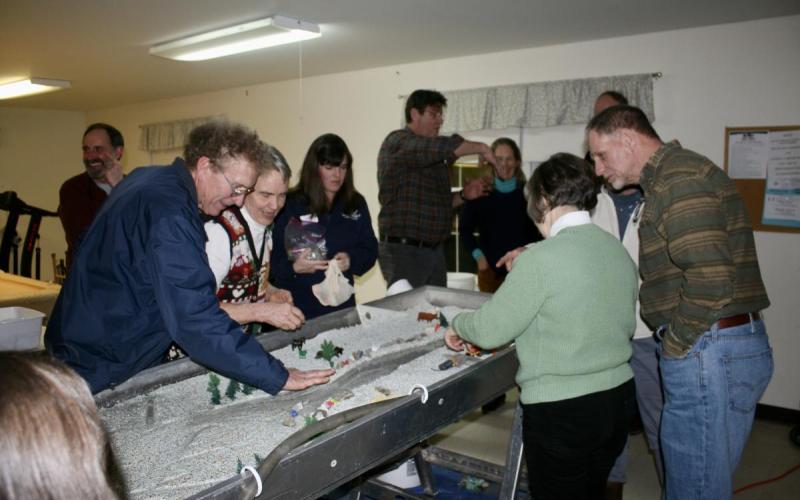
Climate Resilience
What is climate resilience?
As the climate is changing, extreme weather events (also referred to as natural hazards) occur more frequently, putting a strain on municipalities, especially small communities in which there are limited staff who must address all aspects of municipal governance. For example, in addition to all their other responsibilities, municipal officials in Vermont and New York increasingly deal with flooding, severe winter storms, severe rainstorms, or stream bank erosion. Resilience is the ability of a system, community or society to plan for, resist, respond to, absorb, accommodate to and recover from the effects of a hazard in a timely and efficient manner.
How is Lake Champlain Sea Grant helping to advance climate resilience in the basin?
Lake Champlain Sea Grant works to improve resilience by connecting partners, decision-makers, and communities to each other and to resources that can lead to informed policy decisions and resilient communities. We partner with floodplain managers, watershed groups, and local government leaders throughout the basin in three main areas of work:

NYS Climate Smart Communities Program:
Lake Champlain Sea Grant serves in the city of Plattsburgh’s Climate Task Force, a group of volunteers that advises and collaborates with the city of Plattsburgh to accomplish actions outlined in the Climate Smart Communities program. This program is a free and voluntary program administered by the New York State Department of Environmental Conservation. It lays out specific actions local governments can take to reduce greenhouse gas emissions and improve community resilience to the impacts of climate change. To learn more about the city of Plattsburgh’s Climate Task Force and how to get involved, contact the Task Force coordinator at cctfcoordinator [at] gmail.com.
Flood Resilience Education for Municipal Officials
In partnership with state, nonprofit and local organizations, Lake Champlain Sea Grant educates municipal officials and staff on actions they can take to build flood resilient communities. In November 2021, Lake Champlain Sea Grant surveyed municipal officials in the Lake Champlain basin to better understand their hazard resilience needs. This led to our work to increase awareness of flood resilience funding opportunities and technical assistance.

In the Lake Champlain basin, most flood-related damage is a result of erosive flood water in the river corridor. Protecting river corridors from development is the #1 action municipalities can take to protect people and communities from extreme flooding. In partnership with The Nature Conservancy and the State, Lake Champlain Sea Grant creates presentations and educational material about flood resilience and river corridor protections for municipal boards in interested communities.
Assessing Flood Response Networks
As part of the Cooperative Institute for Research to Operations in Hydrology (CIROH) Lake Champlain Sea Grant staff are working with researchers at the University of Vermont to learn more about how flood forecast information is received and shared among emergency managers and community stakeholders in Vermont communities. Learning from these studies will help to improve the usability of flood forecasting tools on regional and national scales.